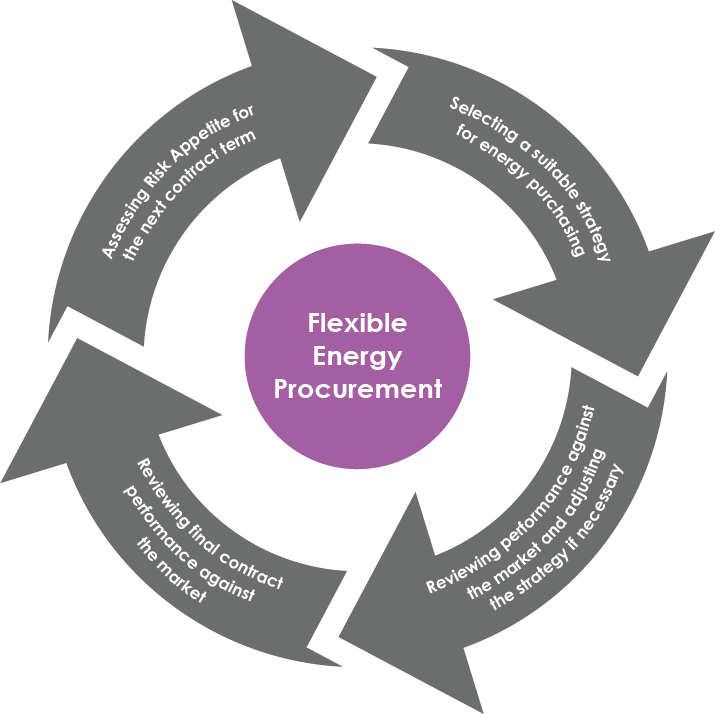
The primary aim of flexible procurement is not to beat the market. It is, however, a tool to procure your energy smartly and to mitigate the risks associated with market fluctuations. In other words, it is a way of managing the price risk.
Flexible procurement used to be an approach only accessible to large users. The shift in the industry now accommodates users with consumption down to 2 GWh. Still, the larger the consumption, the more flexible products available. In clients’ mindsets, this was perceived to be a risky strategy and still is. Yet, what is riskier: taking just one bet or taking a series of bets on the price to average the outcome? History and experience show that the latter usually gives better results.
Additional advantages embedded in flexible purchasing:
- The pricing is less opaque in nature than in fixed contracts. All charges are visible and transparent. Fixed contracts present all costs bundled into few fixed rates. The lack of a breakdown is an opportunity for the suppliers to increase their margin to the detriment of clients.
- Flexible procurement minimizes the risk premiums by passing the risk back to the customers. The client buys the energy at the transparently traded prices, and the non-commodity charges are market reflective.
- Dips in the energy market are reflected in the budget. With increasing transmission, transportation, and policy costs, this is where the costs can be mitigated.
Flexible energy procurement starts with a risk appetite assessment (the amount of risk the client is willing to take) and the strategy selection, yet it does not end there. Experience shows that best contract performance is achieved through a hands-on approach. Constant market monitoring and reassessment of the strategy throughout the contract are crucial for achieving best results.

Energy costs are an integral part of your budget, and managing energy smartly is key to increasing your margins. Now available to a larger part of market participants, flexible procurement is all about managing the risks of a commodity market.



